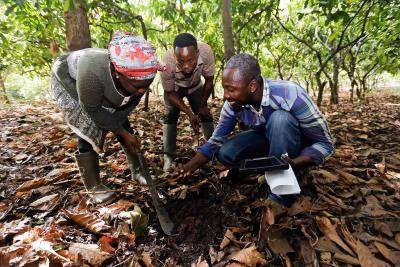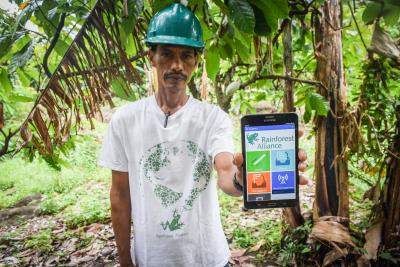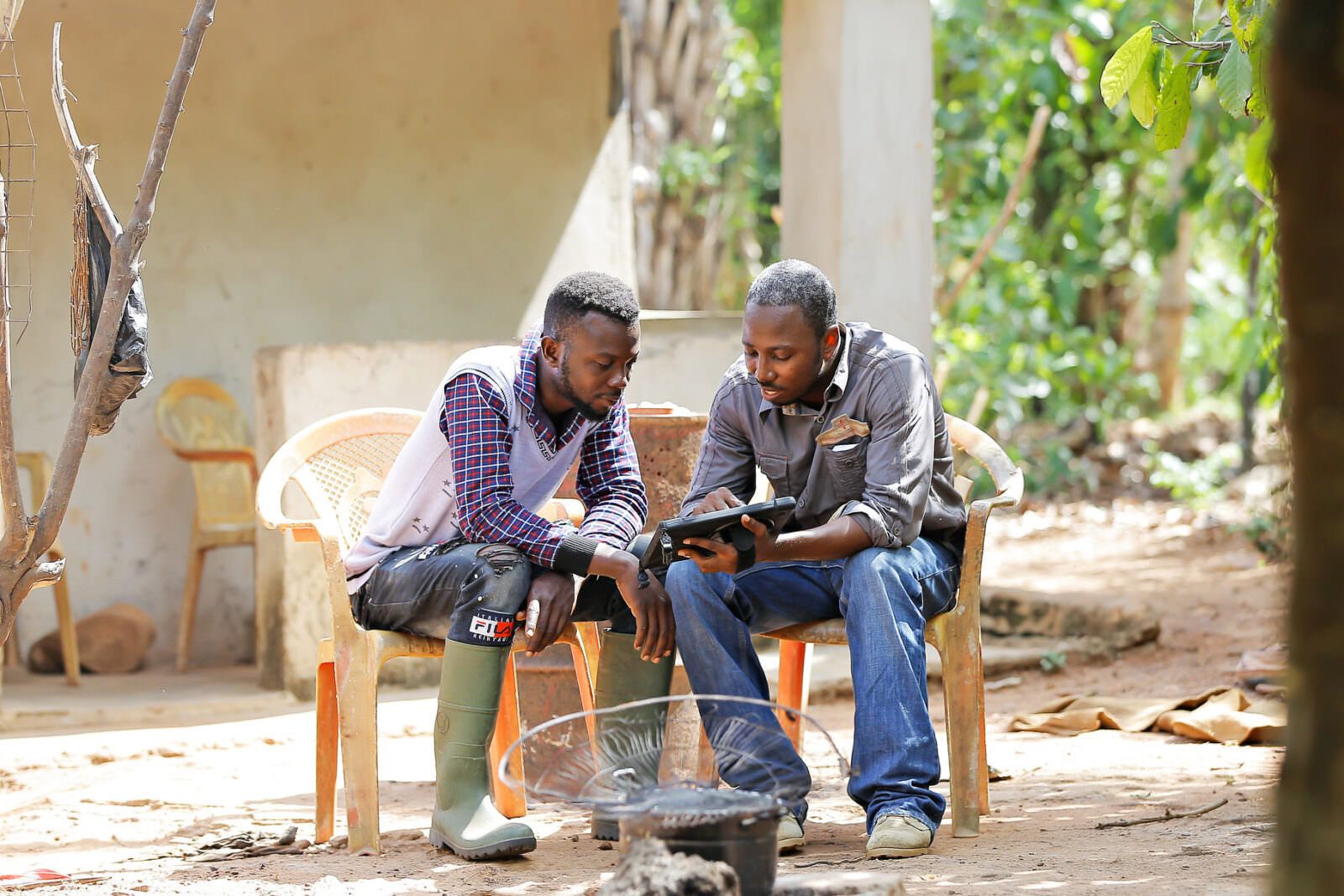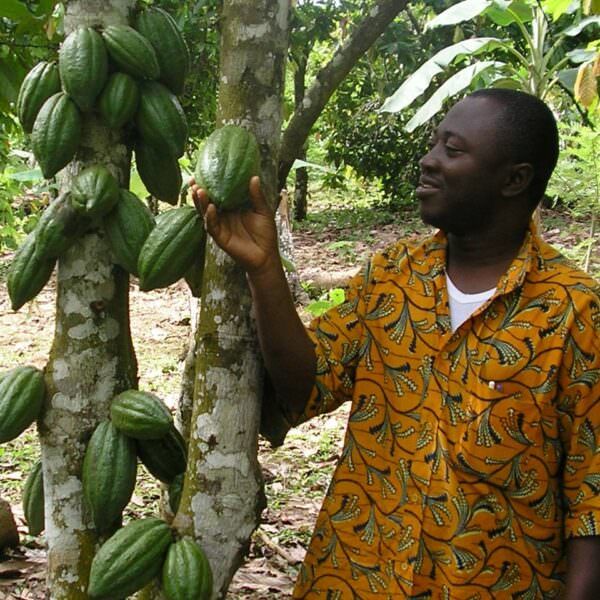Nowadays, farmers even in the most remote locations can connect across vast distances thanks to mobile technology. The Rainforest Alliance’s expanded digital innovation programs make the most of this global connectedness, using new technology to deliver individualized, data-driven farm plans and crucial coaching to farmers—putting the Rainforest Alliance truly at the vanguard of agricultural digital innovation.
Smallholder farmers the world over are in crisis, confronting everything from droughts and floods to proliferating plant diseases and plummeting yields. For many of these farmers, tailor-made advice on how to adapt to these ever-increasing threats can mean the difference between thriving and perishing. But most farmers in remote areas don’t have access to the in-person coaching that could improve their farms’ health and profitability—and the well-being of their families and communities.
Mobile communication technology is one way to reach large numbers of farmers who are increasingly connected across vast distances through rapidly growing cellular networks. The Rainforest Alliance is leveraging this opportunity to scale up its training efforts by significantly deepening its commitment to digital innovation—an area we will continue to invest in for years to come.
Healthy forests and vibrant communities are an essential part of the global climate solution. Sign up to learn more about our growing alliance.
Farm Grow initiative
In addition to scaling up existing digital programs, we launched new initiatives to provide support to farmers on their sustainability journey. As part of our FarmGrow initiative, for example, we developed individualized seven-year farming plans—all accessed on mobile devices—that could increase the yields of participating Ghanaian cocoa farmers as much as three-fold. The plans use pictographs (to accommodate varying literacy levels) to guide farmers in implementing best practices that nurture soil health and increase climate resilience, such as pruning and re-planting.

Our approach is anything but “one-size-fits-all.” In fact, all suggested interventions and investments are based on data the farmers input themselves, like current farm conditions and investment capacity. One of the most exciting aspects of these tailored plans is that farmers can access a profit-and-loss (P&L) worksheet at any time, a feature offered by no other farming app.
A joint initiative with the Grameen Foundation and other partners, FarmGrow started in Indonesia and has now extended to Ghana and Côte d’Ivoire. Currently 5,000 farming households are participating in FarmGrow, and recent interviews with farmers suggest they are enthusiastically adopting the recommendations made for their farms. FarmGrow will support 20,000 farmers by the end of 2020.
Ag-tech developer challenge
To tap into the most advanced technology available, the Rainforest Alliance held an international competition, calling on technology companies to develop a remote-sensing data product that would make farm plans even more scalable and precise. Remote sensing (satellite, radar, or drones that can spot or “sense” from a remote distance) of sickly trees, for example— could transform the way we create plans for farmers. Currently, a FarmGrow field coach goes to each farm to manually collect and record information, but with precision agriculture technologies, the same information can be gathered much more quickly and precisely—and for many more farmers.
The Rainforest Alliance was overwhelmed by contest entries from leading technology and artificial intelligence companies. The winning products are currently being piloted with cocoa farmers in Ghana, with an eye to deploying it in cocoa-producing landscapes in Côte d’Ivoire, Nigeria, Indonesia, and Ecuador, eventually reaching about 120,000 cocoa farmers.
Mobile sustainable farming apps

In addition to this exciting initiative, the Rainforest Alliance continues to collaborate with farming cooperatives and traders to develop and use mobile apps that best suit their needs—whether as a means of keeping track of best practices for the purposes of certification, or to be able to assess the outcomes of responsible practices. Farmers everywhere from Honduras to Vietnam are using these apps, which are designed to run offline after material is downloaded, so that farmers can access and enter information no matter where they are—making their path to sustainability that much smoother.




